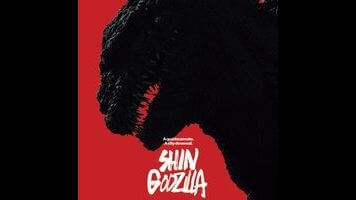People who complained about the lack of Godzilla in Gareth Edwards’ 2014 American take on the King Of The Monsters failed to understand one thing: There’s never all that much Godzilla in a Godzilla movie. He’ll show up at the beginning, sure, and at the end, and once in the middle to reveal his new power or adversary or whatever the creative team has dreamed up to differentiate this from previous Godzilla movies. The remainder frequently consists of one of these two types of scenes: either a precocious youngster in a bucket hat and shorts toddling around, oblivious to the fact that he’s smack dab in the middle of kaiju country, or scientists and bureaucrats sitting in meetings, trying to figure out how to stop the seemingly unstoppable menace.
Shin Godzilla, the 29th Godzilla film produced by Japan’s Toho Studios and the 32nd worldwide, barely has any cute kids. Therefore, by process of elimination, it leans heavily on the latter. And it does so with a wry, very Japanese sense of humor. Case in point: Throughout the film, whenever a government official speaks, their title will flash across the bottom of the screen. As the film progresses and the bureaucratic situation gets increasingly complicated, those titles get longer and longer, until one person’s title takes up half the screen. It’s a subtle visual gag, highlighting the absurdity of not being able to attack the giant monster who’s currently leveling Tokyo because, as it moves from sea to land, no one can agree whose jurisdiction the campaign should fall under.
Godzilla originated as a metaphor for the nuclear bomb America dropped on Japan during World War II, another fact that is not lost on co-directors Hideaki Anno (Neon Genesis Evangelion) and Shinji Higuchi (Attack On Titan parts 1 and 2). Both directors began their careers in anime; although Anno is the more iconic figure, Higuchi has more experience in the kaiju realm, having started his special-effects career on 1984’s The Return Of Godzilla and directed the 2006 live-action disaster movie Japan Sinks. Their vision for Godzilla returns the King Of The Monsters to his nuclear origins, as opposed to his space or Mecha incarnations: Mutated by nuclear waste dumped into the ocean and powered by nuclear fission, this Godzilla glows red just under his skin, making him an awe-inspiring sight even after he knocks out the Tokyo power grid.
He also evolves into different forms throughout the film, the most fully mature of which breathes fire and and is able to shoot laser beams out of his back, sort of like one of those night lights that projects constellations onto your ceiling, only a lot more deadly. (The creature effects, accomplished through a combination of puppets, animatronics, and CGI, are impressively executed throughout.) These powers are revealed in a scene midway through the movie where the Japanese Self-Defense Force finally gets its shit together long enough to mount a coordinated attack on the beast; it doesn’t work, of course, but the attempt—and Godzilla’s counterattack—are spectacular enough that audience members at The A.V. Club’s screening of the film were clapping and cheering.
The failure of this attempt prompts the American government to propose a nuclear solution to the Godzilla problem, an unsubtle plot point that fully establishes rogue official Rando Yaguchi (Hiroki Hasegawa) and his special task force of “pains in the bureaucracy” as Japan’s last hope. (In another very Japanese touch, while Yaguchi is ostensibly their leader, the solution to the Godzilla problem is communal.) They’re countered by a very unconvincing American special liaison, Kayoko Ann Patterson (Satomi Ishihara), who wants to sacrifice Tokyo on the altar of her political ambitions. Ishihara tries, but is clearly not fluent in English, let alone a native speaker—which would be fine, if she weren’t the film’s representation of America and its selfish, individualist values.
So, yes, Shin Godzilla is dialogue-heavy, and sometimes it fails to make much sense. And after that knockout battle scene in the middle of the film, the end conflict is a little anticlimactic, especially for Western audiences used to a lone hero sacrificing themselves to save the day instead of the successful execution of a coordinated team effort. But these things are all part of the charm of a Godzilla movie, and as far as Godzilla movies go, this one is—just as Toho promised—a smashing return to form.









































